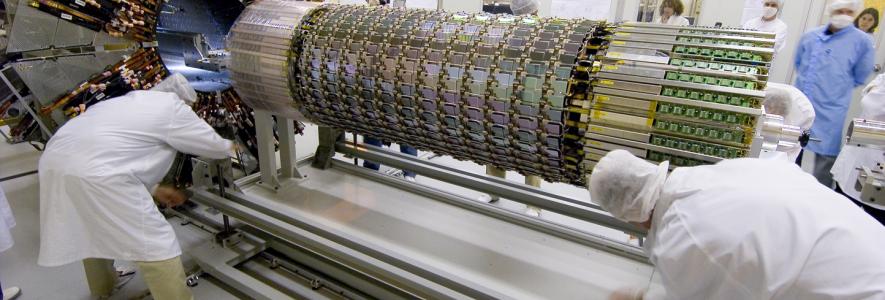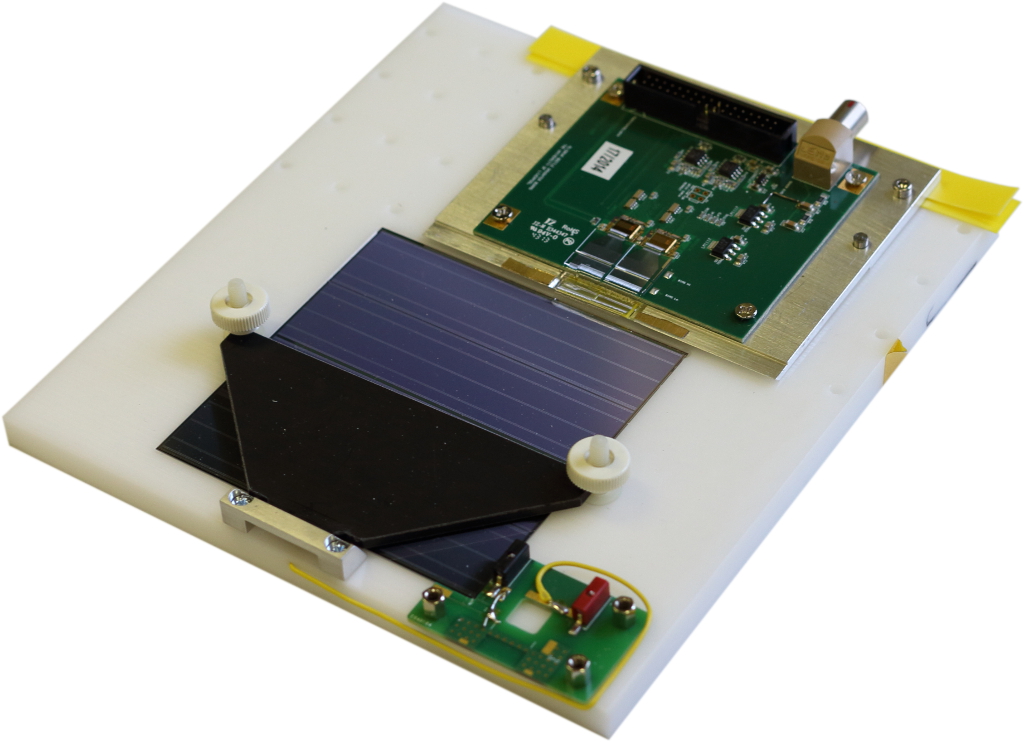
The ATLAS tracker is made up of two parts: the semiconductor tracker (SCT) and the transition radiation tracker (TRT). Together with the pixel detector at the heart of the detector, these trackers work to precisely measure the paths of particles that result from the enormously energetic particle collisions that take place at the interaction point in the centre of the detector.
 Around 700 million collisions can be detected by the tracker every second. This amount of data is far greater than what can be processed, stored or analysed by the experiment. Data from the tracker is therefore very important in working out which collisions are interesting and worth keeping and which can be discarded as uninteresting 'background' events. As a result, fewer than one in a million collisions detected in the tracker are ever actually recorded to disc for later analysis.
Around 700 million collisions can be detected by the tracker every second. This amount of data is far greater than what can be processed, stored or analysed by the experiment. Data from the tracker is therefore very important in working out which collisions are interesting and worth keeping and which can be discarded as uninteresting 'background' events. As a result, fewer than one in a million collisions detected in the tracker are ever actually recorded to disc for later analysis.
The existing tracker is now aging as a result of damage from the radiation it experiences during everyday operation and it is also not expected to be able to cope with the greater rate of collisions that will be generated when the LHC is upgraded in 2022. The tracker is therefore being upgraded to allow it to continue to operate after 2022, whilst significantly upgrading its performance at the same time.
The Cambridge group is part of the wider UK effort to deliver half of the barrel tracker and we are earmarked to become both a production site and a quality control site for the project. If all goes well, we will test around 3000 sensors and produce and test 1000 modules over the next three to four years, ready for installation between 2022 and 2023.
In operation, the tracker uses about the same amount of power as a small car
